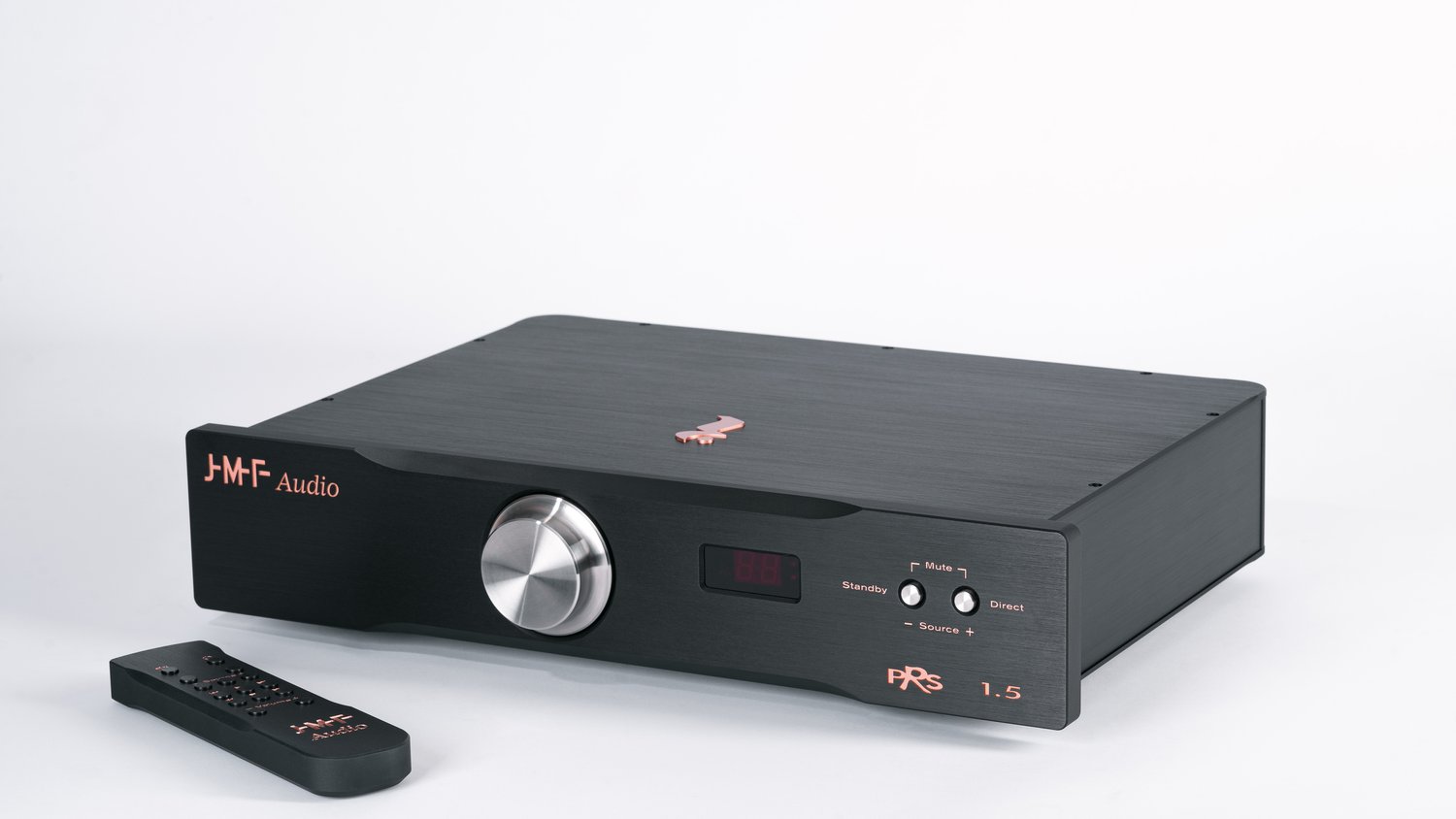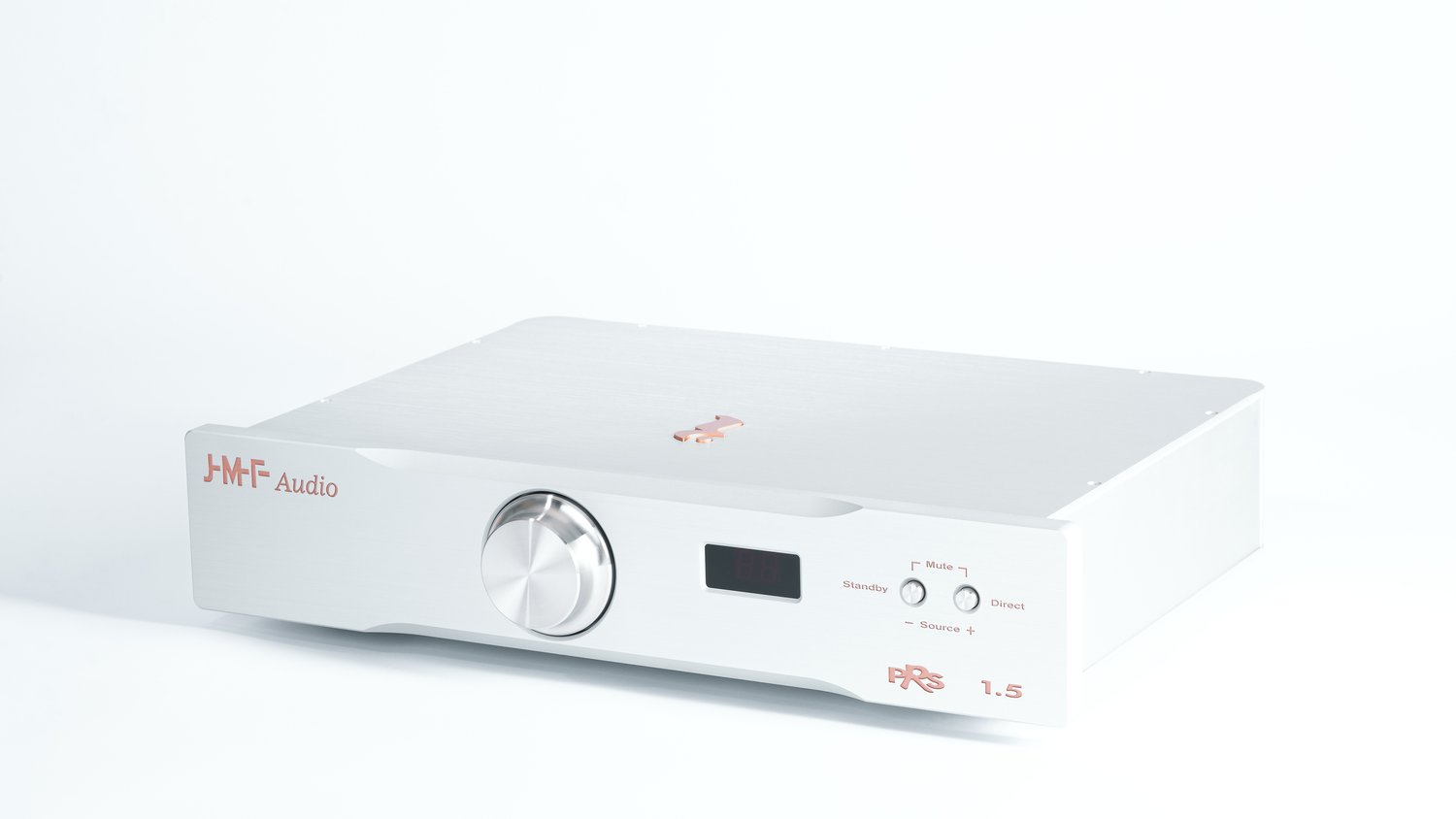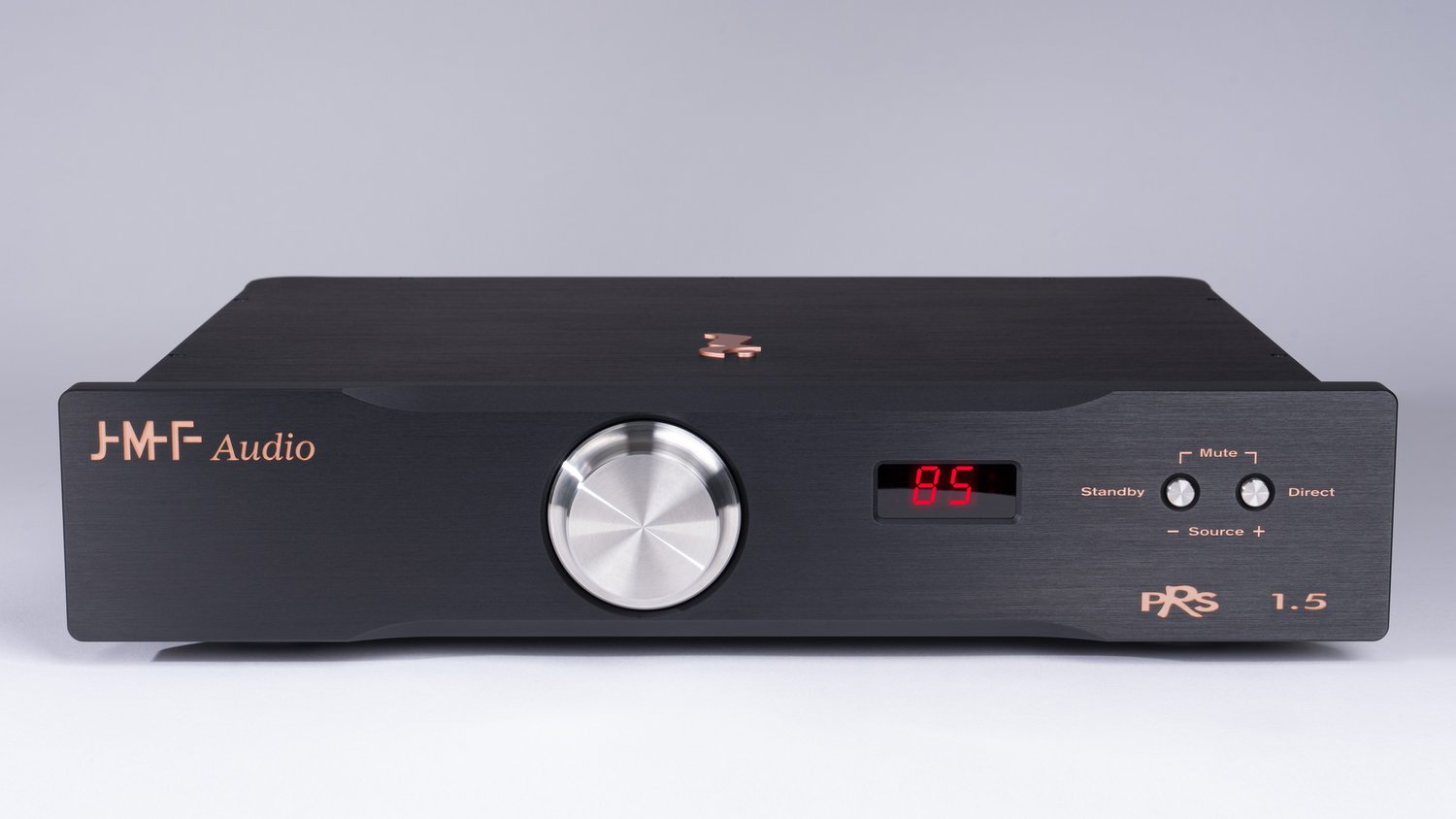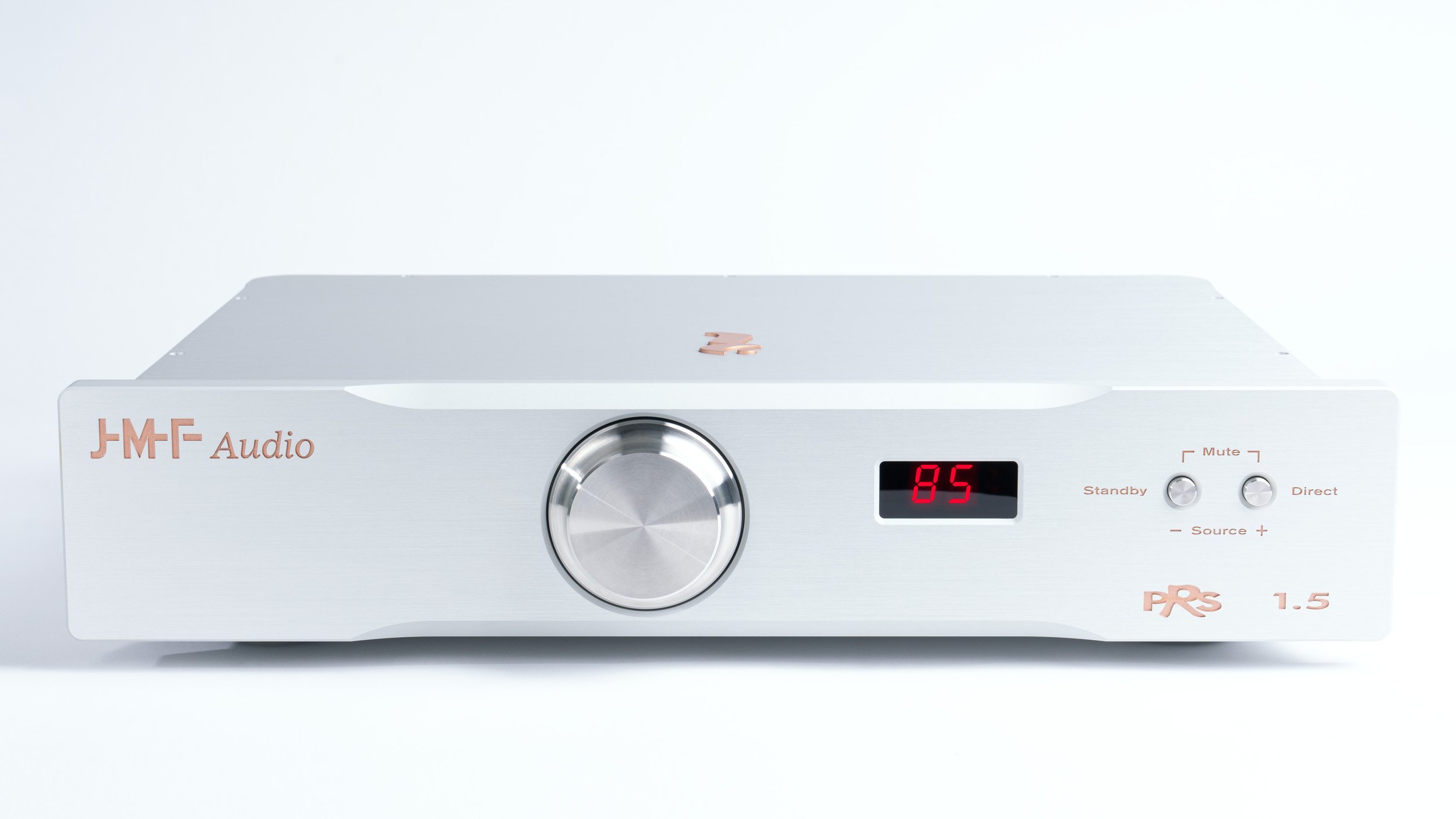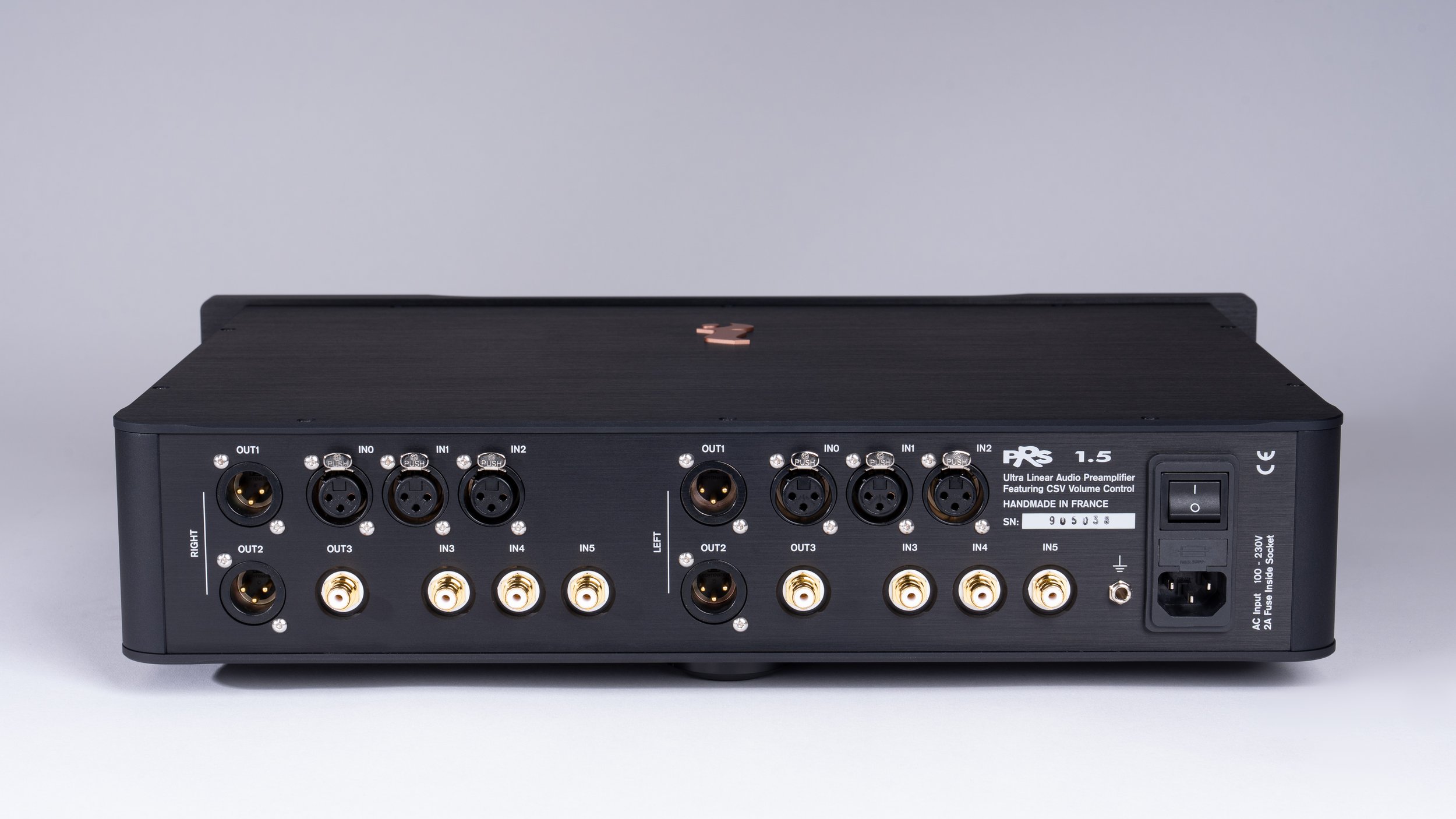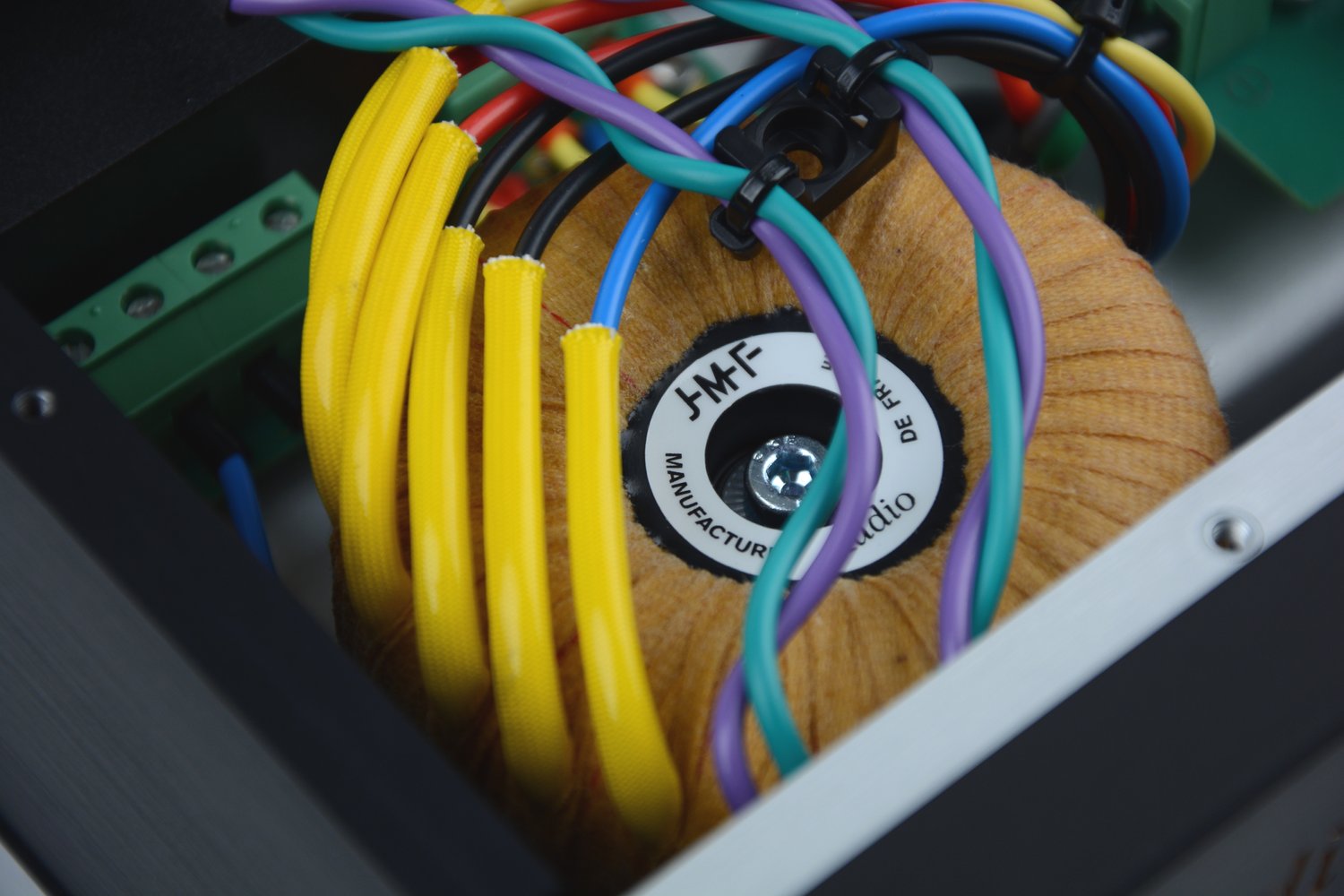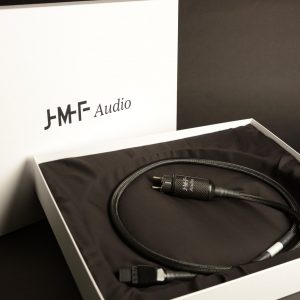JMF Audio PRS 1.5
Technical characteristics
| Bandwidth | 1Hz .. 100kHz (+0.0 / –0.1dB) |
| 20Hz ..20kHz (+0.0 / –0.0dB) | |
| Signal to noise ratio | > 130dB (+22dBu 1kHz narrow band) |
| 128dBA typ. (+22dBu 1kHz in / bw. 22..22k Hz) | |
| THD+N | 0.0005% typ. (+22dBu 1kHz in / bw. 22..22k Hz) |
| Crosstalk left/right | < -120dBA |
| Output impedance | 50 ohms |
| Maximum gain output/input | 0dB (XLR bal in) +6dB (RCA in) |
| Volume control range | 70 steps of 1dB |
| Volume control step precision | better than 0.05dB above volume [40] |
| Volume control left/right level mismatch | < 0.1dB above volume [40] |
Description
Selecting the source, controlling the volume… Caring for the music…
The quality of the power amplifiers propelled JMF Audio to the reference recording studios of Nashville, USA, in 1989, as reported in the History of the brand. Although capitalizing on more than 30 years of experience in analog designs for music lovers, the research and development for the PRS 1.5 pre-amplifier took many years, as the first owners who followed the genesis can attest…
The impossible had to be made possible: to insert an element without loosing any detail of music.
The JMF Audio power amplifiers owners had dreamed of the matching control unit. It had to be up to our expectations. We think it was also worth the wait.

JMF Audio had designed excellent preamplifiers in the past. However the new challenges for the reference JMF Audio preamplifier were extremely high:
1. For sound quality the goal was to equal a fixed passive attenuator carefully designed by JMF Audio.
2. For precision, left/right perfect symmetry, low glitch on changes, precisely defined steps had to be assured.
3. For ease of use, remote control operation had to be possible as with our DXC D/A converters.
Point 1. was a test that none of the preamplifiers we tested passed successfully. (obviously, we thought)
Point 2. was easy to fulfill for integrated circuits based preamplifiers but rarely possible on the best sounding ones which volume control were based on resistor ladders or potentiometers. Resistor ladder units featured large glitches.
Point 3. was not a problem for many preamplifiers but the best sounding ones were passive and not remote controllable though.
The PRS1.5 eventually saw the light. Not only it is the only preamplifier to successfully fulfill point 1, but it also surpasses by far this target ; mostly thanks to the hand calibrated input/output stages and impedance matching provided by JMF Audio’s SSA Super Symmetrical Analog technology.
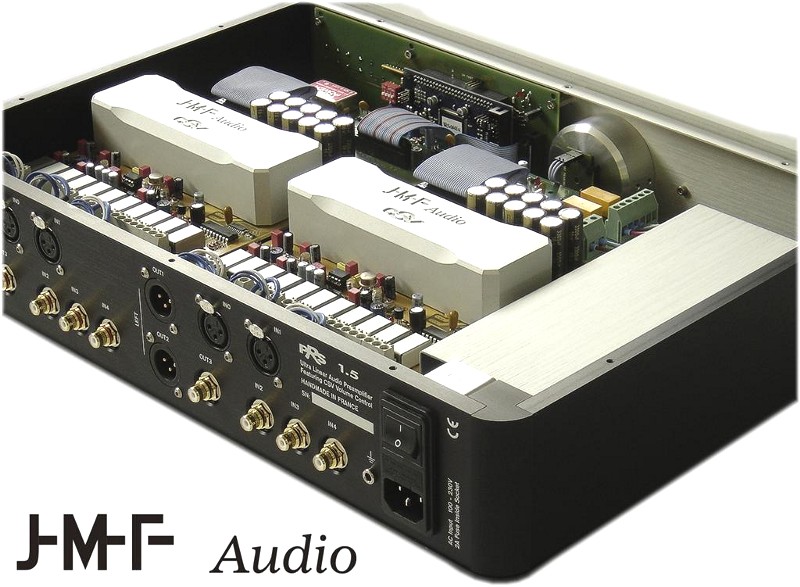
The PRS1.5 is a dual mono, fully balanced design that embeds the innovative CSV volume control.
> CSV is a fully passive volume control system based on a digitally controlled switches network.
> CSV by concept features zero noise, zero distortion, zero phase shift, infinite headroom!
> CSV is sealed and shielded in a machined block of aluminum, JMF Audio engraved.
> CSV features a quadruple redundancy for an expected lifetime far superior to the best potentiometers.
> CSV is input and output buffered in the PRS1.5 by JMF Audio’s SSA Super Symmetrical Analog technology.
Complementing the major aspects, the details are of significant importance regarding the musical result:
The PRS 1.5 has taken advantage of the result of the long researches of JMF Audio on the sound neutrality of passive components, semiconductors and materials, as described in the section about the power amplifiers. The PRS 1.5 pre-amplifier utilizes selected and uncommon components for audio applications: instrumentation semiconductors, bespoke passive components, selected and noble materials…
After selection on technical aspects, refined selection on measurement, the final decision on absolutely all the audio components that the PRS 1.5 contains has been taken after long listening tests in the newly built JMF Audio’s studio.
The PRS 1.5 inherits of the JMF Audio’ power amplifiers innovative and still unrivaled hand calibrated precision input stage technology, enabling 100dB of common mode rejection of interferences carried by the input cables, this means more than 30 times better than found in professional balanced circuitry. This parameter having been enhanced by integrating psychoacoustic criteria.
The proprietary DC coupling circuit allows a direct signal path (enhanced and improved with revision D).
Un-balanced incoming signals automatically take advantage of the symmetrical structure right from the input.
The same care has been taken for the output section for enhanced balancing precision.
This defined JMF Audio’s SSA Super Symmetrical Analog technology, possibly unique…
A total of 8 adjustment points require manual calibration after a 100 hour burn-in period on each preamplifier.
The preamplifier’s mono audio boards feature metal case ulta low noise discrete components (military grade) and bespoke capacitors on the power supplies (starting from revision D). Every component and connector on the audio path have been selected for their reliability and on listening for their natural sound characteristics.
The JMF Audio proprietary PGP pure gold finish of the printed circuit board is incompatible with the automated processes. The hundreds of components populating both sides of the boards and in the CSV volume section are hand mounted and soldered one by one by our specialized technicians with JMF Audio’s bespoke solder, using a magnifying glass. A work that recalls jewels manufacturing.

Certainly, the most transparent line stage, the PRS 1.5 is also the matching driver for the JMF Audio HQS power amplifiers.
The JMF Audio elements are entirely hand crafted in our workshops and pass severe tests. Since revision B, every pre-amplifier has even been verified by listening in our studios after an operational period of over 100 hours, so as to ensure its future owner will receive the best.
| Features: | |
| Balanced inputs | 3 (IN0, IN1, IN2) |
| Unbalanced inputs | 3 (IN3, IN4, IN5) |
| Balanced outputs | 2 (OUT1, OUT2) |
| Unbalanced outputs | 1 (OUT3*) |
| Volume display | [30] to [99] |
| Relative gain setting between sources | [-9] to [ 6] display for -9 to +6dB gains |
| Source display | [i0] to [i5] |
| *Out3 can be set to follow the volume control or set as direct (DI) for a tape loop or to drive a headphone amplifier |
[di] display on selection, recalled by a dot light on normal use |
| Ground connection (earth) | dia. 4mm banana type |
| Remote control | IR, all functions using MBR-1 |
| Massive aluminum volume control button / double bearing / massive aluminum compartment / smooth rotation. | |
| Machined 10mm thick anodized and brushed aluminum chassis, mounted on special damped and anti skidding JMF Audio feet. | |
| Gold plated analog mono boards embedding CSV and mounted on suspensions for acoustical isolation. | |
| Specifications: | |
| Input impedance | > 5k ohm / XLR and RCA inputs |
| Maximum input level | +22dBu XLR bal / +16dBu RCA |
| On normal output OUT1 (OUT2), at volume max: | |
| Bandwidth | 1Hz .. 100kHz (+0.0 / –0.1dB) |
| 20Hz ..20kHz (+0.0 / –0.0dB) | |
| Signal to noise ratio | > 130dB (+22dBu 1kHz narrow band) |
| 128dBA typ. (+22dBu 1kHz in / bw. 22..22k Hz) | |
| THD+N | 0.0005% typ. (+22dBu 1kHz in / bw. 22..22k Hz) |
| Crosstalk left/right | < -120dBA |
| Output impedance | 50 ohms |
| Maximum gain output/input | 0dB (XLR bal in) +6dB (RCA in) |
| Volume control range | 70 steps of 1dB |
| Volume control step precision | better than 0.05dB above volume [40] |
| Volume control left/right level mismatch | < 0.1dB above volume [40] |
| Specific to modular output OUT3: | |
| Maximum gain in variable mode (at volume max) | 0dB (RCA in) – 6dB (XLR bal in) |
| Output impedance in variable mode | 50 ohms |
| Gain in direct mode (DI) | 0dB (RCA in) – 6dB (XLR bal in) |
| Output impedance in direct mode (DI) | 600 ohms |
| Power consumption | < 25W in operation (< 1W in standby) |


